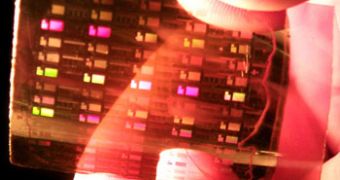In 1965, Gordon E. Moore, co-founder of Intel, predicted that the processing power of computers will double every two years, meaning that the number of transistors placed inexpensively of a microchip will increase exponentially. Moore's law, as it is currently known, describes pretty accurately the computing advances over the years; however, as more and more transistors are placed on a silicon chip with the same size, so do the manufacturing technologies have to adapt in order to create even smaller electronic components.
Nevertheless, the component's minimization cannot go on forever, as we can already see today. Computer chip manufacturing companies are already taking evasive actions in order to avoid the problems related to components minimization, and are developing alternative manufacturing methods. Spintronics and nanotechnology seem to provide a solution, however they are still far from mass production capabilities.
Brewer Science Inc. believe that they might have found a new alternative, creating so-called printable transistors by using carbon nanotube structures placed on a flexible plastic film. Furthermore, it seems that their technology allows to print high-speed transistors on a wide range of flexible substrates, at extremely low costs in large quantities.
Though not a new invention, Brewer Science seems to have resolved at least one of the problems related to the printing of electronic circuits on flexible structures. They are usually constructed out of polymer semi-conductors in order to compensate for the flexibility features; however, most of these circuits present are relatively low electronic mobility, meaning electrons travel at slow speeds through them, thus limiting the clock to only a few kilohertz.
Compared to the clocks of modern processors which range in the domain of a few gigahertz, such structures would not bring much enhancement to the electronics industry. On the other hand, the new method used by Brewer Science Inc., by growing carbon nanotubes on a plastic substrate, could in fact create transistors consisting of only a carbon nanotube to spawn low-density nanotube films.
Though presenting incredible density properties, they can only carry low currents which are not sufficient by today's quality standards. By depositing electronic-grade caron-nanotubes solution on a transparent plastic film, in much the same way as an ink-jet printer does, the company has been successful in creating a printable transistor circuit that can support clocks as high as 312 megahertz, a far cry from the previous such devices that only presented speed of a few kilohertz. Furthermore, the technology also enables the use of a broad range of currents.

 14 DAY TRIAL //
14 DAY TRIAL //